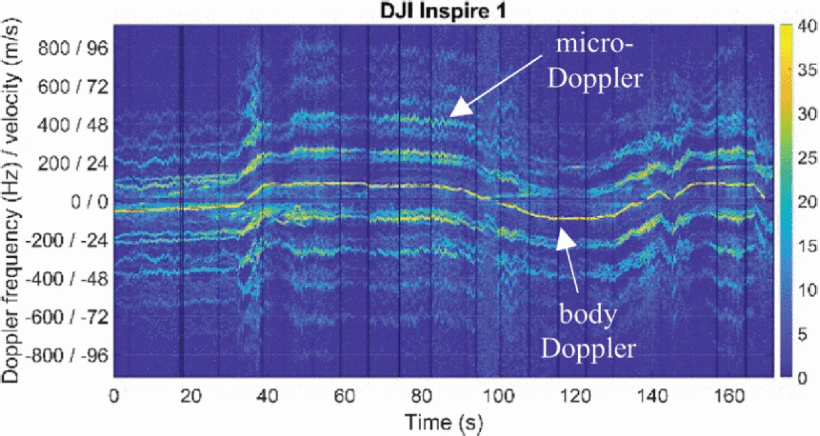Micro-Doppler Based Target Recognition With Radars: A Review
Radar-based sensors for automatic target recognition have remained an active area of research since the early 1990s. Their ability to detect targets over a wide area, irrespective of visibility and weather conditions, makes them a preferred choice.
With the ever-increasing deployment of radars in congested urban scenarios, the detection and classification of smaller targets like humans, drones, bicycles, and birds have become challenging. Lowering the velocity and Radar Cross-Section (RCS) thresholds improves the detection of smaller targets. However, this leads to a large number of irrelevant target signatures, cluttering the radar screen.
The study presents an analytical review of recent developments in radar micro-Doppler-based signature analysis and target classification techniques.
Targets might exhibit micro-motions such as rotations, vibrations, and tumbling in addition to their bulk motion. These micro-motions could modulate the backscattered signal, causing sidebands associated with the target's Doppler shift or micro-Doppler effect. Radars with sufficiently high range resolution (HRR) might observe the displacements caused by a target's micro-motion as "macro-range" responses or "micro-range signatures." The combination of micro-range and micro-Doppler signatures can analyze and detect complex human motions. Researchers have tried to employ this micro-Doppler signature as a specific characteristic for radar target recognition and classification.
Due to the varying spectral content of micro-Doppler signals, the Fourier transform was found unsuitable for analysis. The micro-Doppler modulations can be better analyzed using bilinear or quadratic time-frequency transforms.
Some distinct features of relevant targets extracted from the micro-Doppler signatures help distinguish the clutter from actual targets. The robustness and relevance of the selected features determine the classifier's performance. Based on target range bins, a time-frequency transform analyzes the micro-Doppler signatures. RCS, radar operating frequency, and aspect angle may affect micro-Doppler scattering from a target.
Model-based or data-driven models are the most common approaches for classification algorithms. Model-based methods use the dynamic and kinematic properties of targets for classification. Data-driven classifications utilize conventional Machine Learning (ML) or Deep Learning (DL) techniques. DLs directly use micro-Doppler signature images as inputs, while ML-based classifiers require a manual feature extraction before classification. Deep learning classifiers are faster than ML techniques. They can learn the clutter and noise patterns during training and automatically cancel them during data processing. However, they require diverse training and validation datasets for better classification.
Micro-Doppler-based radars can successfully classify aerial, ground, and space targets. They can differentiate between various human activities like walking, running, crawling, and boxing. The radars have proved efficient sensors in the military, automotive, health, and vital sign monitoring systems.
The micro-Doppler-based radar target recognition systems currently need more standardized and globally shared datasets. Continuous learning and dataset enhancement will aid in addressing uncertainty issues in target recognition.




